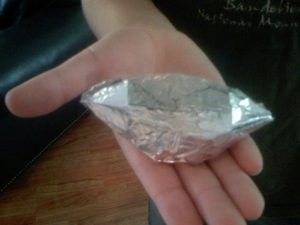 Your challenge is to build a boat that can hold the most small coins before it sinks.
Your challenge is to build a boat that can hold the most small coins before it sinks.
YOU WILL NEED:
- Large bowl of water
- 30 plus small coins per boat
- Aluminum Foil
HOW TO SET UP YOUR BUOYANCY EXPERIMENT
- Fill your bowl to 3/4 with water.
- Cut two 8″ squares of aluminum foil for each boat. Then form a small boat from the aluminium foil of one of them .
- Place 15 coins on the other square of tin foil (not the boat) and have the kids ball it up and place it in the water. What happens? (It sinks!)
- Place your boat in the water and see if it floats. Reshape if it doesn’t! Then slowly add the coins one at a time. How many pennies can you count before it sinks?
- Extend the challenge by rebuilding your boat to see if it can hold even more pennies.
Scientific Explanation:
You are in this experiment working with Archimede Principle – The lifting force of the water is always as great as the weight of the water that the object in the water displaces.
This experiment came from LittleBinsLittleHands.

 The Swedish National Agency for Education (
The Swedish National Agency for Education (